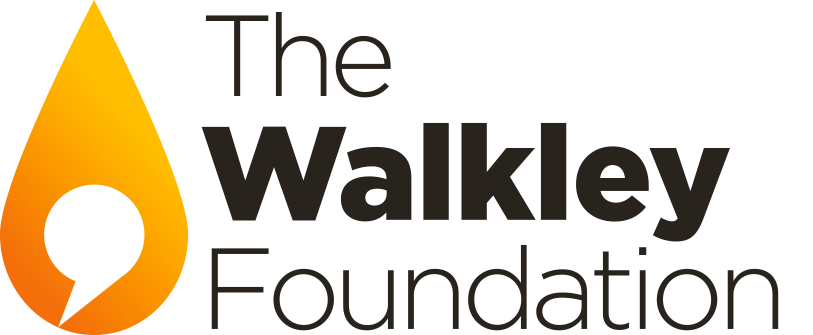In January of this year, Michelle McLaughlin lost her four-year-old son in an accident. She explains how the reporting of this tragedy in the media intensified the grief she and her family were feeling, and hopes her story can help reduce the trauma and pain of such a situation for others.
Our precious boy, Thomas McLaughlin – Tom – was tragically taken from us at Macmasters Beach in NSW on January 6, 2014. Tom was killed after taking two fatal steps onto the roadway from behind a parked car, in full view of his father, sister and grandparents.
 Tom is our middle child. He had an electric little spirit, breathtaking smile and a real zest for life, and people were always drawn to him because of his outward enthusiasm, confidence, gentleness, kindness and joyful nature.
Tom is our middle child. He had an electric little spirit, breathtaking smile and a real zest for life, and people were always drawn to him because of his outward enthusiasm, confidence, gentleness, kindness and joyful nature.
At 5.58pm on January 6, we were a happy family on our Christmas vacation; at 5.59pm we were a family torn apart. Emergency response crews arrived – fire, police then ambulance. Unfortunately, in that order.
People from the media were also among the first on the scene and, immediately on arrival, began approaching family members and eyewitnesses for comments, all of whom were experiencing absolute shock and extreme trauma. Their “reported” responses attest to this.
In the days that followed this tragic event, we were unaware of the ongoing television coverage, however we couldn’t escape the print media reporters who continually harassed us. The day after Tom’s accident, they turned up at our house and our neighbours’ houses, called our phones (landline and mobiles), sent letters, and contacted the director of Tom’s preschool.
As one media outlet printed the story, another would pick it up for reprint. In addition to this, any related story that occurred within a few weeks of Tom’s fatal accident would contain his name as a “baseline” filler. In my opinion, this “relational”
reporting is not only completely unnecessary, but caused a degree of confusion among readers about Tom and the circumstances of his unfortunate and untimely death. Every time we were faced with this reporting, whether directly or via friends and relatives, we were exposed to more pain and suffering, and our grief intensified as a result.
Before my seven-year-old daughter could return to school, the entire junior school had to be addressed by the principal to be given a factual account regarding Tom’s accident. This was to ensure she would not be potentially traumatised further by comments derived from non-factual and misleading reporting in print and on the internet.
Nothing is more tragic than the loss of any life, but the loss of a child’s life is felt by many to be the most tragic, for obvious reasons. Those left behind suffer and grieve for the rest of their days.
However, in our current society, tragedy sadly appears to be a commodity traded and sold within the media. It is a constant and staple ingredient of print, radio and television content and coverage.
Given that so much time and space is afforded to tragedy, I can’t help but wonder whether the purveyors of this topic ever stop to reflect on the benefit or harm resulting from this sort of coverage and the means in which it is gathered.
What I was witness to has left me with a lot of unanswered questions about today’s media:
- Why do photographers (and their publishers) believe pictures of grieving family members are necessary? Do readers really want to see this pain and suffering? Has this been researched?
- What motivation (and insensitivity) drove a reporter to give business cards to a distraught grandfather, requesting he pass them on to his son – whose own son had died within the past 30 minutes?
- Why did reporters feel the need to knock on our door for interviews within days of the tragedy, and then to go and knock on the doors of our neighbours (many of whom had still not been informed of his death), schools and kindergartens?
The trauma and horror of what happened to Tom was intensified greatly for us by the media, and I believe it highlights a need to review the standards of practice relating to the reporting of deaths of minors following tragic circumstances.
In today’s modern world, there are many barriers of protection put in place to shield the innocent and the young. For example, preschool children cannot have pictures taken by a professional photographer unless parental consent is first obtained, and juvenile criminal offenders have their names withheld from the public. But it would appear there is no such protection for a young deceased child involved in a fatal accident or their grieving family.
It is my firm belief that it should be the families that choose whether or not the name or image of a child be used in such reporting. Interestingly, there does appear to be some level of respect in this regard in relation to the reporting of suicide.
I’m writing this piece in the hope that some publications may gain an insight into the pain and suffering they can potentially inflict and worsen for people who are already in a state of severe anxiety and immeasurable suffering. I want them to know this style of reporting on tragic events and the loss of life, particularly in cases where children are involved, can significantly heighten a person’s grief.
I sincerely hope that this article offers a different perspective and understanding of the impact of reporting on the death of a child in tragic circumstances. Sadly, there are and will continue to be many cases of children dying in devastating circumstances every year. And, equally, there will be parents like us who are completely heartbroken for the rest of their lives as a result.
Although Tom’s life has now tragically ended, we wholeheartedly believe that he can still achieve success in helping others. We have established the Tom McLaughlin Road Safety Memorial Foundation, known as The Little Blue Dinosaur Foundation, to allow us to continue to care for Tom each day, and as a reflection of our great love for our son.
The primary aims of the foundation are to:
- Champion the review of road safety within holiday towns, such as beach and rural hamlets, where infrastructure caters for residential populations, not seasonal population spikes
- Advocate for change, specifically the introduction of safety improvements to holiday town (beach and rural hamlet) roadways, in the form of a specific and uniform set of traffic/road conditions that could fit these identified areas nationally
- Produce and distribute age-specific literature to educate young children about road safety, specifically safety around differing roadway environments
- Facilitate support services for families who have lost a child in sudden and tragic circumstances.
Not only do I hope that these measures can spare other families the loss of a precious child but, if the unthinkable happens, it is my sincere hope that a more heartfelt and sensitive approach to reporting such deaths may be considered in the future.
Visit the Little Blue Dinosaur Facebook page at facebook.com/littlebluedinosaur for more details.
“Respect private grief and personal privacy. Journalists have the right to resist compulsion to intrude” – MEAA Journalist Code of Ethics,Clause 11
Showing some R-E-S-P-E-C-T…
The Newcastle Herald’s editor Chad Watson and chief police reporter Dan Proudman respond with their rules and recommendations for reporting on sensitive issues
R is for Reverence.
People will obviously know why you are knocking on their door, but being genuine towards them and their departed loved one should be your first regard.
E is for Empathy.
Leave it in the office. It is different to being genuine. No, you don’t know what they are going through. And pretending to know will only compound their grief and your problem. E is also for Emotions. Remember this is a harrowing time for all involved.
S is for Sensitivity.
Go bursting in with demands and you will leave with a verbal shove, possibly a kick in the arse and no story. S is also for Social media. Avoid parroting unconfirmed information posted on Facebook ‘in memoriam’ pages.
P is for Privacy.
Everyone deserves it and you should respect it. If they want it, you can’t change that. But if the next of kin is not in a position to help you, it doesn’t close every door. Go to a close friend or relative, tell them what you are about and it may soften the load, and possibly open the door for you.
E is for Extra responsibility.
You should always strive to be accurate in anything you report, but it is never more important than here. This may well be the last thing people read about a loved one. Check and double-check facts. Triple-check spelling and pronunciations. It may feel awkward at the time, but they will thank you for it in the long run.
C is for Communication.
If you are not forthright with your intentions, then most people will see right through it. Don’t pretend – tell them what you want and what you are doing. It garners trust and leaves the door ajar for future reporting.
T is for Tributes.
Every person has a story. And every grieving relative knows their loved one has a story. You have to report facts, and the truth, and that will sometimes hurt. But it doesn’t mean you can’t listen. It may well help you understand. T is also for Treatment. Getting the story is only part of the job. How you present it will leave a lasting impression. Think before you type.
Dan Proudman is the chief police reporter at the Newcastle Herald
Chad Watson is editor of the Newcastle Herald
